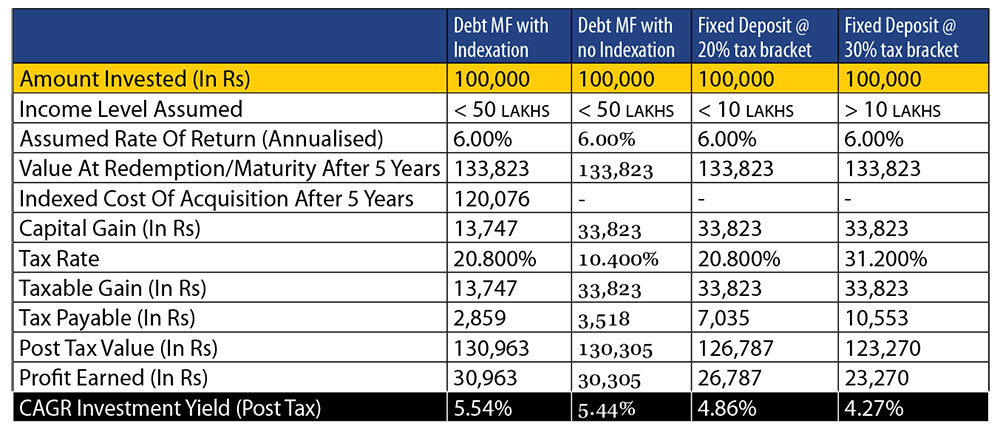Remember the days when every extra income – be it bonus or increment, or retirement corpus found its way into the bank FDs. Our grandparents and parents have all ended up putting their money in FDs mostly in their lifetime. Those were the days when nothing came closer to Bank FDs in terms of security, convenience, and long-term wealth creation. Fast forward to today, fixed deposits rate are hardly favorable given elevated inflation levels. Investors now have multiple options to invest the extra cash as per their risk appetite.
What has changed now?
The reason our older generation invested in FDs was because there were no other alternative available. India is already the 5th Largest economy in the world and is set to become largest in a few decades. As economy grows the interest rates gradually falls. As a result, FDs have lost their sheen as the most popular long-term investment goal and mutual funds have come to the fore in the recent years.
Why Invest in Debt Mutual Funds?
Debt funds are the closest which comes to conventional FDs in terms of risk. Investment in Debt Mutual Fund may be better and tax efficient option over FD. In debt mutual fund investor gets the indexation benefit if he stays for 3 years and above. Debt MFs have options of Systemic Investment Plan (SIP) allowing daily monthly quarterly frequency of investments. It also gives option to move from one fund to another through Systemic Transfer Plan (STP). The most important option Debt MF offers especially for retirees is Systemic Withdrawal Plan (SWP) where investor can withdraw his investment in small instalments as required every month to ensure cash flows. Lastly, Debt MFs are managed by professionals to ensure the credit quality and return expectations are maintained.
What is indexation benefit?
In indexation, the investor is allowed to adjust the price of purchase to reflect inflation for capital gains tax. For example, if you invested in a debt fund in FY 2016 at a NAV of Rs 100 and sold it in FY 2020 at a NAV of Rs 125, you will be allowed to adjust your purchase NAV by a factor of 1.137 (ratio of cost of inflation index in FY 2020 and FY 2016) and your adjusted purchase price will be Rs 113.7. Long term capital gains (held for more than 3 years) in debt funds are taxed at 20% after indexation.
Return Comparison of Debt MF vs Bank FD
Below given is the illustration of FD and Debt MF of similar maturities. The below table indicates that assuming similar annualized rate of interest, investment in debt mf may yield over 100bps more than FD rates due to indexation benefit & tax efficiency.
To conclude, Investment in Debt mutual fund is a tax efficient way of benefiting from rising interest rate scenario. Its multiple features like SIP, STP, SWP makes it conducive to retail investor. Most importantly it is managed by professionals who are expert in handling interest rate risk, credit risk and duration risk.

Note: This is for illustrative purpose only. Consult your tax advisor before investing or taxation. The tax rate assumed is the 20% for Debt MF with Indexation, 10% for Debt MF without Indexation, 20% & 30% for FD rate below & above 10 lakh respectively (based on the current tax slabs for individual/HUFs). 4% Education Cess applicable. Indexation cost is calculated @ 3.46% p.a. (Average of % change in cost of inflation index over last 5 years). The above calculation assumes no surcharge applicable.
Disclaimer:
“Visit here https://licmf.info/KYCredressal to learn more about KYC requirements, SEBI Registered Mutual Funds and Grievance redressal.”
Disclaimer: This disclaimer informs readers that the views, thoughts, and opinions expressed in the article belong solely to the author, and not necessarily to the author’s employer, organization, committee, or other group or individual.
MUTUAL FUND INVESTMENTS ARE SUBJECT TO MARKET RISKS, READ ALL SCHEME RELATED DOCUMENTS CAREFULLY.










